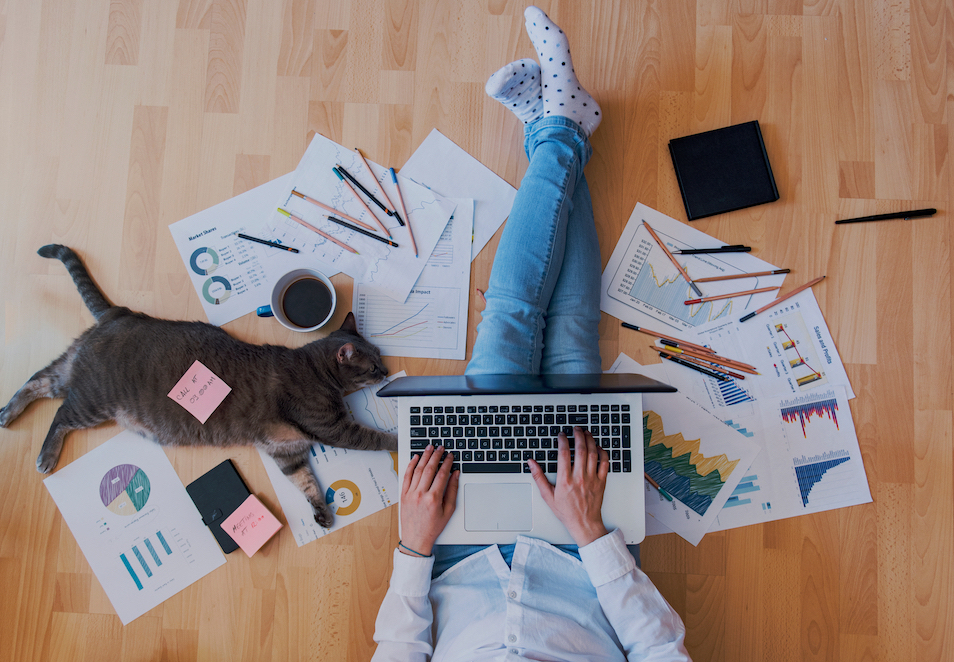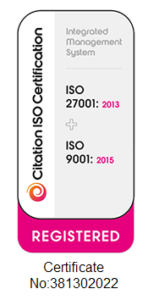Creating Engaging Virtual Presentations From Your Home Office
In these difficult times with many people forced to work from home, we have all experienced awkward moments: from professional couples living and working in constrained quarters, to children interrupting calls, weak internet connections, poorly set up cameras and inadequate sound.
There are embarrassing moments (we’ve all heard about people not realising that others can see they aren’t wearing trousers), entertaining moments (the cat that wants to be on camera during your presentation) and normal family moments (your kids running into the room during an important meeting).
Nobody expects perfection and some unavoidable interruptions can serve to show your audience you are human, dealing with the same issues that they face.
When it comes to your setup, however, it’s important to create as professional an impression as you can. Even in the smallest space, there are simple steps you can take to improve delivery – from getting a better mic, to arranging your laptop or desktop for better camera angles, to using a second screen for slides, to making sure your space is furnished and inviting.
Think about how you will deliver your presentation; for example, consider standing as you typically would in a face-to-face presentation. That doesn’t necessarily mean investing in a state-of-the-art adjustable desk.
Instead, you can arrange your screen or laptop on a box or some books. Make sure your camera is set up so your eyeline is at the right level. You want your audience to be able to look you in the eye, not at the top of your head. I have found it’s helpful to stick a prop behind the camera and practice looking at it.
Record yourself speaking to the camera. Check your background to make sure it’s not distracting and make sure your sound quality is good. Having a good mic is important if you are going to be presenting fairly regularly.
While ideally it’s worth installing LED lights for a better effect, that isn’t always practical and people can be quite forgiving of poor lighting. How you sound, however, is extremely important and can be the difference between your audience listening to you and absorbing what you have to say – or switching off completely.
Try to make sure your presentations are creative. For example, I have a small screen to the side for my Zoom connection and a larger screen behind me where I can present slides, and these act as a virtual background.
When presenting, I arrange my slides and where I sit or stand to ensure the content is on one side and I’m on the other. Having a large screen with a secondary monitor does make life easier and gives you greater flexibility with your presentation.
However, if you don’t have the space or resources to have a second screen, it’s advisable to adapt your setup so that you are visible when you present and then when you’re sharing a graph or data, come off the screen and share the visual presentation you have created. And I do recommend having a decent webcam.
The Virtual Screen Conundrum
Since Covid-19, virtual backgrounds have grown in popularity. However, I’m not a fan unless you physically have a green screen behind you. Without a green screen, you can have distracting issues – such as half your head appearing to be missing or bleeding into the background!
Of course, there are times when people use green screens simply because they lack the privacy and space to share their actual background.
I was once speaking with a man whose virtual background was very distracting, so I asked him to turn it off. Forgetting where he was, he did so and it was immediately clear why he had chosen the virtual background – he was presenting from his bedroom and his partner was in the bed behind him!
The limitations of your living space notwithstanding, it’s obviously best to have a setup that is professional, with a background that won’t distract your audience, but preferably within a natural, relatable environment.
A blank wall is boring and an empty room with concrete floors will affect your sound quality. If your background includes objects that other people have in their homes and offices – chairs, printers, bookshelves, paintings, and so on – it creates a natural connection with the speaker and helps to keep your audience looking at your screen rather than at their emails or other distractions.
No matter how good your setup is, you must use your voice to convey interest and excitement with the topic. The camera is very energy draining so you have to be larger than life in front of a screen than face-to-face.
Managing virtual presentations from your home brings many complexities, but don’t become too fixated on perfection. You’re not in a newsroom studio. Your setup doesn’t have to be perfect – background noise and interruptions can and do happen. However, with these simple steps you can create an effective, engaging and professional environment for your home-based presentations.
Mark Thomas is managing director at Glass Box Thinking, which delivers leadership communication coaching, training and facilitation for STEM organisations. Mark coaches introverted scientists, engineers, consultants, sales reps and project managers to become more influential leaders.

